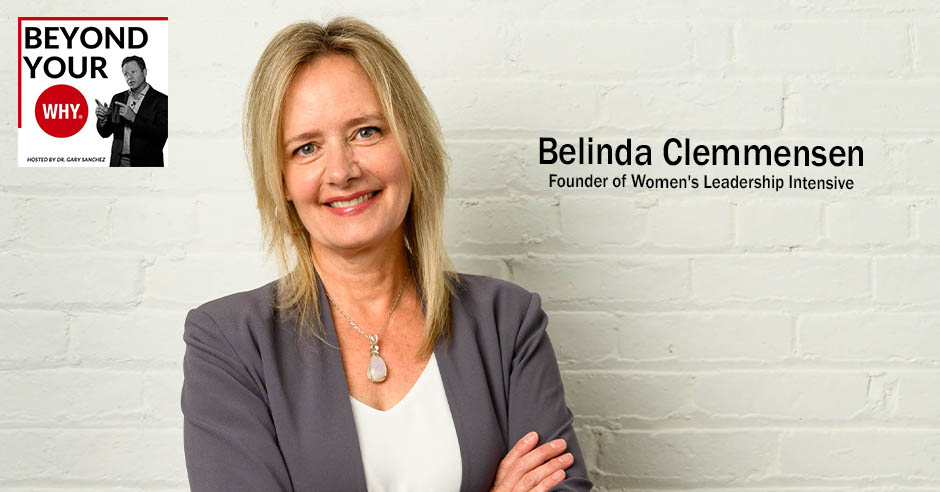
Do you find yourself feeling restless in the status quo? Do you have that urge to take things and make them better? If so, then you are like this episode’s guest. An ultimate innovator, Belinda Clemmensen is passionate about the potential positive change when women lead at scale. Having co-created Paddle to a Cure and founded The Women’s Leadership Intensive, she discovered the power in having women work together and doing things differently. In this conversation, she sits down with Dr. Gary Sanchez to share how her WHY of Better Way continues to motivate her work with the feminist movement. She dives deep into the systemic change that needs to happen to encourage more women in leadership roles, equipping us with data and insights on diversity, equality, and meritocracy in the workplace. Find out more about Belinda’s work and let it inspire and empower you to lead the change the world needs.
—
Watch the episode here
Listen to the podcast here
Women In Leadership: A Need For A Greater Systemic Change With Belinda Clemmensen
In this episode, we’re going to be talking about the Why of Better Way. If this is your why, then you are the ultimate innovator and you are constantly seeking better ways to do everything. You find yourself wanting to improve virtually anything by finding a way to make it better. You also desire to share your improvement with the world. You constantly ask yourself questions like, “What if we tried this differently? What if we did this another way? How can we make this better?”
You contribute to the world with better processes and better systems while operating under the motto, “I’m often pleased, but never satisfied.” You are excellent at associating, which means that you are adept at taking ideas or systems from one industry or discipline and applying them to another, always with the ultimate goal of improving something.
In this episode, I’ve got a great guest for you. Her name is Belinda Clemmensen. She co-created Paddle to A Cure in 2000. This women-led series of sea kayaking expeditions for people living with breast cancer taught her that there are different ways to build and lead organizations and that women working together do things differently. Many years later, Belinda founded The Women’s Leadership Intensive with the mission to inspire, empower, support, and equip women to lead the change the world needs. Now, she serves as CEO of the organization, a certified B corp.
These two formative experiences drew Belinda to work with women in leadership. Her passion is for the potential for positive change when women lead at scale. Belinda loves her work and feels honored to work and mentor amazing women who make a difference daily through their leadership. She has received the gold Canada Award for Excellence in Training and is a certified professional coach, training provider, and member of the International Coaching Federation. She is also a SheEO Activator and member of the Equal Futures Network and the Canadian Women’s Chamber of Commerce.
Belinda qualified as a finalist for the Canadian Association of Women Executives and Entrepreneurs Extraordinary Woman of the Year Award. She’s published articles in The Journal of Experiential Education, Adventure Kayak Magazine, and Kanawa Magazine, and was a finalist in the National Flare Magazine Volunteer Awards. She is a regular presenter at conferences around the world.
Belinda earned her Bachelor of Science in Biology from the University of Waterloo and her Master of Education in Workplace Learning and Change from the University of Toronto. Any place that takes her to the peace and beauty of nature is Belinda’s happy place, especially when she is in her sea kayak, backcountry camping, or learning to sail. Belinda lives in Ontario with her partner, Shane, and son, Gabe. Belinda, welcome to the show.
Thank you so much. It’s great to be here.
That was a mouthful. You got a lot going on there. Right now, you’re not in Ontario. Do you live outside of Ontario?
I live in Ontario but North is relative in Canada. I am in what’s called the Near North because there’s so much more North of me, but whenever you get North of that band that’s right by the Canada-US border, that’s where all our big cities are. I’m North of that in a little town called Huntsville, Ontario.
Where did you grow up? Take us back to what you were like when you were in high school or even before. What was your childhood like, Belinda?
I grew up in a very quiet, rural place. That’s where my love of nature came from right from the beginning and my love of peace and quiet. I grew up in a small town in Ontario and that worked for me when I was in elementary school for the most part. By the time I got to high school, I was looking for something bigger in my life.
Small-town high school for any of those in your audience who also grew up with a small-town high school, you either love it or it feels a bit like you’re in this small pond and you’re trying desperately to get out of it. That was me. High school for me was a time to rebel. It was a time to look at the systems and structures around me and ask a lot of questions and do a lot of pushing back on those things. I think that set me up pretty well.
For those that are listening, Belinda’s why is Better Way which we already talked about. Her how is to challenge the status quo, push the limits, and think differently. Ultimately, what Belinda brings is a way to contribute, add value, and have an impact on people’s lives. It sounds like you were already doing that when you were very young.
I think so. It’s interesting because having done my WHY.os felt a little bit like telling me back my life story.
You have a high school in a little town. What kinds of things were you into in high school?
I was into theatre and books. I was into anything that took me to the bigger world outside of my small town and my small high school. I was already a feminist in high school and a pretty strong-minded feminist at that. I remember co-writing a feminist magazine in high school with a good friend of mine who felt like the only other feminist in my school.
I’m sure that was not true, but it felt like it way back then. I was a fringe kid in high school and that suited me pretty well. I feel like I’ve always been a little on the margins. I am always questioning and pushing. As you said, it’s the better way. It’s the challenge and it’s the, “What can I do about it? How could I make this better?”
What got you into the feminist movement or consider yourself a feminist? What was that turning point for you?
It was my experience of seeing the differences between my own family and my own community. A big turning point for me was early in my career, I worked for Outward Bound Canada. I did a little bit of work in the US as well, but mostly in Canada. I’m a big believer in Outward Bound. I learned to be an amazing facilitator and expedition leader there. They do great work and the outdoors is a very interesting place to notice gender differences.
For example, we always had instructor pairing. There would be two instructors for any expedition that we were taking out on a canoe trip, a sea kayaking trip, or whatever it might be. Whenever there was a male-female co-instructor pairing, people would inevitably go to the male for all things technical, all things hard skills, and inevitably come to me as the female for all things relational, emotional, and facilitative.
I love both of those things. I love the facilitative conversational stuff, but I also like technical things. I like learning them. I like knowing how to fix things. I like knowing how to navigate and how to tie a knot. I find that fun and engaging too. I always felt in those situations that we had this gender binary and I was always put over here. It’s not that I needed to completely flip it, but I wanted to be the whole thing. I wanted to be able to be a whole person. The downside of the gender binary is it pushes us into these boxes that may not feel like us or it may not feel like the entirety of us.
[bctt tweet=”The downside of the gender binary is it pushes us into these boxes that may not feel like us or may not feel like the entirety of us.” username=”whyinstitute”]
Define for us what you mean by a feminist. What is a feminist?
I go back to a simple definition, which is a feminist is someone who believes in equal rights and opportunities for all people regardless of gender. We’re thinking now these days of gender as a spectrum, which is healthy. There are shifts that we’re making in our society. We’re moving away from the strictly binary, “You are masculine or feminine,” and saying, “There is a lot of gray area in between these things.” Feminism, although it’s a tricky word because it has a history, the way that I use it and the way that I like to work from it is believing that everybody deserves equal rights and opportunities. Right now, we don’t have that.
Outward Bound showed you that women could do just as much as men and shouldn’t be marginalized or put into the box of, “You’re just a relationship emotional gal and we’ll go to him for everything else.”
Yeah and vice versa. I’m assuming there are probably men who also got tired of only being asked technical questions and might want to have a relational question or be on the other side of it. I’m assuming that maybe there was a longing on both sides to be able to be more of a whole person.
How was that received in your high school?
Small town Ontario, I imagine, is a small town with lots of places. I couldn’t get out of there fast enough in terms of getting out into the bigger world and trying to meet new people. Also, expanding my worldview and wanting to travel. That was my response to it. I knew that I could not continue to learn and grow in that small-town context and a lot of people can, but for me, that wasn’t working.
We are off to college now. Where did you go to college again?
I went to do an undergrad at the University of Waterloo, which is a school in Ontario and stayed in a five-year co-op. I met lots of people. Co-op’s great for getting out and working. That was my next step in moving out into the world.
Did you do some education after that as well?
It’s interesting because I have a Science degree. I’ve never worked a day in science. It was through doing a Science degree that I learned that I probably didn’t want to be a scientist but it was still a good experience. Education, in and of itself, is so beneficial on so many levels but then I realized what I was interested in is more about human systems and human relationships and human dynamics.
That’s where I went in to do a Master’s degree in Workplace Learning and Change thinking that we spend so much of our time, our energy, and the contributions that we make in the world in our work that if I was going to start looking at, “How can we make things better,” that was the place that made sense to do it.
You got your degree there. What was your first job after that?
I worked all throughout my Master’s degree. I come from a history of business people. My dad’s got a construction management business and his dad had a concrete business. When I graduated from my undergrad, it didn’t occur to me to go get a real job. I started building my own facilitation and training company early on and did a lot of subcontracting work to get that off the ground. By the time I did my Master’s, I was looking more at, “What does a leadership development consulting or training firm look like? What would that mean?” That’s where I went from there with my business.
You first business was a leadership training. What was that called?
It was called Clemmensen Consulting. I chose the name so that I had the option to change my mind anytime about what I was doing. I keep it open and flexible.
How did that go for you? How did your first business work out or maybe you’re still doing that?
I’m not still doing it, but it worked out great for me. I love freedom. I love being able to do what I think is best fit at the time. Being a business owner allowed me to do that. I was young. I was in my twenties so I didn’t need to be making big bucks. I was happy to be having experiences and working with great people and great companies. I did that for quite a long time. There came a turning point as I got older where I started to look at that work and say, “I am supporting a system in the corporate world, in the capitalist society that we live in, that I’m not sure I fully believe in.”
That was a bit of a crisis because my business was doing fine and I loved doing the work that I was doing with the people that showed up in my spaces whether it was training programs or whatever but there was this doubt in the back of my mind saying, “Am I doing the right work? Am I helping these people to perpetuate systems that I don’t think are best or that I don’t think are working for a lot of people?”
It took me probably 3 or 4 years of going through a process of wondering and asking myself those questions and having a bit of a crisis to be honest about what am I doing with my life. I’m sure lots of people have that crisis around that point in their life too, in their late 40s. You start wondering, “What’s this all about? What’s the last third or hopefully half going to be like?”
That’s what led me back to my feminist roots and to start asking the question, “If I was going to support leaders, whom do I want them to be? What work do I want them to be doing in the world?” By then, we finally had some good research and data on not only the fact that our numbers are still low in terms of women in leadership, but also when we do have women in leadership, we see incredible benefits, not for women, but for businesses, for communities, and for societies.
All of these things started to line up to the point where I shifted my focus and changed my business to The Women’s Leadership Intensive. That’s where we come in with this mission to inspire, empower, support, and equip women to lead the change the world needs. There you’ve got your better way and you’ve got your challenge and your contribution and they all line up again.
What you said was you didn’t believe in the system that you were in. What do you mean by that? Give us an example.
Even without doing research, I could tell that some people were being promoted over other people. It seemed like some people were being heard at the table and other people were not. I’d look at executive teams and I still do this to this day whenever I’m looking at an organization that I might want to work with. I look at, “What does your executive team look like?”
If that executive team all looks the same, which almost all of them still do, then we know we’ve got a diversity problem. Diversity problems are not accidental. Systems are designed to maintain and uphold what we know as those norms. We can design those systems differently. We can design them better so that they are more inclusive but we have a lot of work to do to get there.
When did you start The Women’s Leadership Intensive?
That was probably 2018.
What’s the purpose of The Women’s Leadership Intensive?
It’s to support women in their leadership development for a couple of reasons. One, so that they are ready to level up in their career. They’re ready to take on the next leadership role. Another is for development in place. How can you have more influence in the role that you’re in because some people aren’t looking to be promoted? They love what they do, but they want to be able to do it with more influence and scope.
Regardless of where you go with that leadership development, one of our core ways of working with people is it’s about leading as you. It is not necessarily emulating the leadership styles or the approaches that you’ve seen in the past, because frankly, those are already outdated even though they’re still everywhere. It’s about figuring out what matters to you, what are your values, and what feels purposeful and meaningful to you as a leader. What conversations do you want to be having?
It’s this idea that if you are in a leadership role, let’s say 50% of your job is the functional stuff. Maybe you’re a finance person, maybe you’re in sales, or maybe you’re in operations. That’s great. In a leadership role, I call that half of your job. The other half of your job is leading people. It’s having hard conversations and vision. It’s understanding the context of the world around us. Also, knowing that, “We don’t exist in a world anymore where we can ignore things like diversity and inclusion or sustainability.” Even if that’s not part of your job, if you’re a leader, it’s part of your job.
I have two daughters and this is interesting for me as well. I have a lot of women on our team here, also. What have you found makes a great leader?
The willingness to know yourself first. Understand your own life experiences and be reflective. The skill of reflection. Can you look back and understand your own life experiences? Can you understand your own privilege?
What do you mean by understanding your own privilege?
We have a bit of a myth of how everyone is self-made or there’s a myth of meritocracy that the best person rises to the top and that’s why they’ve got the job. There has been some interesting research that’s debunked the idea that a lot of the people who have those positions or those roles also have a lot of other things like resources for White skin or they happen to be men or even their name can be predictive of where somebody might end up in a certain organization.
It’s not to say we should necessarily feel bad about that, but it’s to understand that it exists. My starting point to go somewhere is different from yours. It is different from somebody else’s. It’s the idea of that intersectionality. What are the factors where we have privilege in our lives? What are the places where we are marginalized in our lives and start to understand our own picture so that we then have space to understand that others’ pictures are very different from ours?
I can see how this could all become pretty controversial.
This is the leadership courage of the future, which is being willing to have those kinds of conversations.
It’s hard to tell how much of it is true. When I look at my own friends, my own friend group, my father was a dentist, we had all the advantages that you could have. My brothers and sisters have done well but if I look at most of my friends that have done well, most of them came from nothing. They came from working their butts off. Even some of my friends that are doing well now are wondering about their own kids. “Should I not give them what I could give them and have them struggle?” It’s because it seems like the people that had to struggle have risen to the top and the ones that had everything given to them are not at the top. What’s the truth?
It’s this interesting interplay between individual experience and then themes and trends when we look at bigger population groups. Anything that I say in general, there’s going to be individual exceptions to that. Generalities are inherently inaccurate. However, when we look at bigger themes and populations, let’s say, women in leadership, we can look at data that will tell us that Fortune 500 CEOs hit 10% women in 2023. There have never been more than 10% of CEOs of Fortune 500 companies who were women.
We can look at that and say, “We have a disparity here between these two groups of people when we look at it at the population level or those big group levels and CEOs of Fortune 500 companies is only one metric but it’s an interesting metric because those are people who have a lot of impact and influence in the world. It’s interesting to say, “Who’s setting the tone for business culture in North America?”
It’s not women or not at scale. We start to say, “Are there individual women who are being incredibly successful in business?” There are and both are true. It’s not either/or. It’s both. There are individuals who struggled and that’s what made them great. Other individuals had an easier path and that’s what got them to be great because they had all the resources and they were able to use those resources. Both are true.
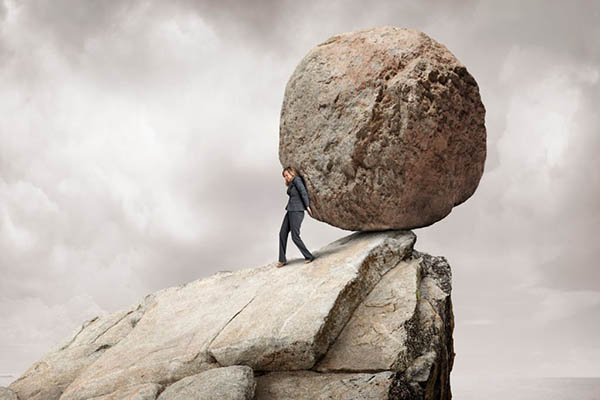
One of the things that come out for me is looking at the gap versus the gain. You said there are 10% women CEOs in the Fortune 500. What was it several years ago?
Something I talk about in the book a lot is the idea of things getting better and they’re still bad. We want to look at both of those things. We want to look at the progress made and we also want to look at how big is the gap left to go. Again, it is not an either/or, but if we look at progress made, two thumbs up across the board. There are more women CEOs in Fortune 500 now and if there’s a graph that will show that curve and it’s going in the right direction.
This is true almost everywhere. We see some drops in the data where it says, “We had a bad year or we were on a trajectory where we were seeing this progress towards equality and equity, but then something happened and it dipped down.” It’s looking at both. It’s saying, “The trajectory is going in the right direction. That’s progress. That’s the gains,” and the gap is still 40%. That needs to be made up. If we’re going to get to 50/50, women are past 50% of the population and 48% of the workforce.
Is the goal then to have 50/50?
It would be an interesting experiment. We’ve never done it. I would love to see what happens.
What is the goal of feminism? What is a feminist trying to accomplish?
I can’t answer that question for all feminists, but I can certainly answer it for myself. There are two things. Certainly, we want to get to equality, which is where we get the same thing. That would be the 50/50 idea. We’re going on the Fortune 500 CEO things because we’ve got the numbers, but it’d be cool to see 50% of those CEOs be women and see what changes. We know that there’s good research that shows that things do change when we have women in leadership so it’d be cool to see what happens.
That’s the equality piece of getting there but the other interesting thing is when we look at the workplace, for example, it wasn’t built for women’s lives. It’s because women weren’t there in the past when the workplaces were set up and things we’re moving towards parental leaves and acknowledgment that all workers are potential parents in the workplace as well as workers in the workplace. However, in the past, that certainly has been on the shoulders of women.
How can we also create different kinds of systems that take into account different kinds of people’s lives? Now if women are 48% of the workforce, what needs to change about workplaces to make them friendlier as a culture to women and women’s lives? Childcare is an easy one to look at because we can see the impact that a lack of parental leaves has on women’s careers particularly.
Should a leader of a business or an organization have the ability to pick whoM they want as the successor, or should it be dictated to them that they have to pick a woman?
The ability to choose for yourself is important and makes it even more imperative that you do the work to understand your own bias. Interestingly, in this research about the myth of meritocracy, what they found was that the more people believe in meritocracy, the more likely they are to demonstrate bias in hiring.
[bctt tweet=”The ability to choose for yourself is important and makes it even more imperative that you do the work to understand your own bias.” username=”whyinstitute”]
What is meritocracy?
Meritocracy is the idea that you got there because of your merit alone and because you’re the best person for the job. It’s not because your skin is White, because you’re a man, or because you had the right connections or were introduced to the right people.
It makes it sound like having a White skin color, having a family that’s done well in the past, working hard, having the right school systems, and working your butt off is a bad thing.
Not at all.
How can somebody reading this not believe that based on what they’re hearing right now? How would they not believe that?
It’s not about feeling bad about it or thinking that it is a bad thing. It’s understanding that your starting point’s a little different than somebody else’s or it’s understanding that we tend to hire people who are like us or look like us. That’s well-documented. It takes intention for us to go, “Why do I think that candidate who looks more like me and behaves more like me is the best person? Is it because they are or is it because it’s so familiar to me? It feels right. Can I challenge myself to say, ‘I want someone beside me or with me who is very different, who doesn’t look the same, think the same, and hasn’t lived the same kind of life?’”
Again, I don’t want people to feel bad and it’s not helpful or constructive for us to feel bad about being White or about having had resources in our lives. What’s much more constructive is to be able to say, “I recognize the difference though. I see it in myself.” To be able to go, “Because of that I see the world this way.” It’s important for this day’s leaders to expand that view significantly and say, “How are other people seeing this world? How can we ask that? How can we find that out?” If people around us all look like us, it’s hard to get that information.
I could see that. I have a friend who writes a weekly email newsletter in the finance world. He’s one of the world’s leading economists. I went to an event at his house and it was amazing the diversity in that group. It was just crazy. Every possible walk of life you could imagine was there, even his own kids. He has seven kids. 2 are biological and 5 are adopted by 5 different races.
I asked him one time, I said, “Why do you have such diversity in your group here?” I’ve never seen something like that. He said, “If all I do is look at the world through my own eyes and I don’t get the perspective of everybody else around me, then I don’t know what’s going on. I can’t write or talk about it because all I know is what I know. My job is to tell the world what’s going on, but I can only see it through my eyes if those are the only ones I use.”
If we scale that out a little bit, if all the other people who are telling the world how things look the same way and have that similar life path, then we’re going to get one slice of the story unless we have people like your friend who’s working intentionally to expand the viewpoint, expand the perspective, and have it be a lot richer, diverse, and inclusive of all kinds of threads in this story.

I can see it being challenging to get people to even care about what you’re saying because if I’m in a leadership role, it’s worked great. I got a great business. I got great things going on. I’m living the life that I want to live. I don’t care what you have to say. I don’t care about diversity. I don’t care about all the stuff. It doesn’t matter to me because I already know what works. This works. What you are telling me is, “Let’s see what happens.” I’m not willing to go to a, “Let’s see what happens.” I want to know, “This already works. I know it has for generations. Why do I want that?” I don’t.
It works for some people much better than others. I’m certainly seeing a movement here in younger generations coming into the workforce in a lot of the industries that I work in where they are starting to say, “If there’s not real diversity, equity, and inclusion work happening in an organization, I don’t want to work there. If they don’t care about sustainability and it’s only about profit, I don’t want to work there.”
The rubber will start to hit the road as the workforce changes and puts pressure on organizations and other stakeholders start to put pressure on organizations, which is already happening. It’s happening through policy. It’s happening through the court of public opinion. I do think the pressures are there for courageous progressive leaders to be able to start looking at the context and the culture that surrounds us and say, “What’s happening here? What do people care about? What do I need to do differently to not be the leader now, but be the leader tomorrow?”
Tell me the downside to feminism. I want to give you an example. In one of my daughter’s schools that she went to, they hired this diversity expert. There was no diversity in the school. There wasn’t any diversity in the whole area and they made it up. They had to create diversity and it turned such a great school into not a very good school. It had a lot of hate after a while. The whole thing turned negative. I know that wasn’t the intent, but it did go south and it did go sour. I’ve seen that happen as well. What are some of the downsides to that movement?
One thing that I struggle with all the time is, “How do we have these conversations and not be pointing fingers at each other and blaming and creating further positionality?” It’s because I don’t think that’s helpful. If we’re not all on board with doing this together, it’s hard to get anywhere fast. Creating a gender-equitable world is going to take women and men working together who both want it. Both see that there are benefits for all of us and for our children in a world that is more gender-balanced and more equal.
[bctt tweet=”Creating a gender balance, a gender-equitable world, is going to take women and men working together who both want it.” username=”whyinstitute”]
The same is true for anti-racism work. That work needs to be done together. If we have a bunch of people who are feeling like they’re on sides and they’re positional and they can’t talk to each other, that’s a problem. Hopefully, as we’re learning how to have these difficult conversations about things like gender, race, social class, and wealth, I hope that we’re getting more skilled at it.
A lot of people will say, “We got to call out people who are doing things wrong. I always think of it as, “How do we call people in to have conversations, even if they’re hard conversations?” The idea that we won’t be uncomfortable is not a thing anymore. We’re going to have to be uncomfortable but again, isn’t that part of leadership being willing to be uncomfortable?
It’s an interesting path you’re on. I’m sure it’s had not been without challenges and won’t continue to be with challenges. You’re trying to challenge the status quo to find a better way so people can have a bigger impact.
It’s not the path of least resistance, that’s for sure and I recognize that. I feel it.
How do your husband and son feel about your path?
My husband is an amazing feminist and ally. He’s a high school shop teacher. He teaches construction and woodworking. He’s been a huge advocate for getting girls into skilled trades, and for having girls-only construction classes. He’s 100% on board and it’s great. We get to have these conversations together. We’re learning about it together. Neither one of us is perfect. We make mistakes. We make each other mad but it’s been a pretty cool journey together. My son is a younger generation. They talk about this stuff in ways that we did not when we were kids.
You brought something up right there that I would guess some of the other readers picked up on. You said girls-only. How do girls-only fit in with inclusion?
It’s a great question. I’m so glad you asked that. In certain spaces, you are used to being a minority if you’re one of the few. That could be an executive team. Maybe you’re the only woman or there are only 2 women on a team of 12, which happens a lot. That’s the stats right now. You’re usually 1 or 2 on an executive team or if you’re in an industry like mining or skilled trades, which is a male-dominated space, you’re probably the only woman on the crew.
In those kinds of environments, it is helpful to have some women-only spaces because it takes away the work of being the only one. Imagine you’re the only woman on a construction crew. You’re the only woman at the executive table. I’m telling you, it’s extra work to be that only. Maybe you’re the only person of color, maybe you’re the only LGBTQ+ person. Whatever it is being an only is a lot of work or one of the minority.

It’s helpful in those situations to have some, in this case, women-only or girls-only spaces because in that case, you don’t have to do that extra work. It’s like the first story I told about working with a male co-instructor on a sea kayaking expedition. When I’m working with women on a sea kayaking expedition, it takes the whole gender binary dynamic out of it for a little while. I don’t have to worry about it.
The same might be true of men-only spaces. I don’t know because I haven’t been in them, but I’ve certainly seen that magic happen in women-only spaces, whether that’s leadership development, skilled trades, or whatever the environment might be. There are lots of places we don’t need that, but there are some places I think we still do.
How do you feel about men-only groups? They’re frowned on right now. If you have a men-only club, it’s frowned on. If you have a men-only golf club, they are frowned on. If you have a men-only business group, it’s f frowned on. “I want to join.” How do you balance that if it’s supposed to be inclusive? I want to take a second to thank you for answering all these challenging questions because I’ve never had an opportunity to ask these kinds of questions and get answers without all kinds of emotion involved.
It’s so good. I am not saying we don’t need men-only spaces. We need a healthy men-only space where men can be whole human beings including emotions and the whole picture. I don’t know if all men’s spaces are like that. They’re probably a mix. Some are, and some aren’t. The difference is when it is the socially dominant group.
If it’s a men-only space in a society that is male-dominated, which we have now. We still have a more patriarchal male-dominated society, it’s a little different because you have a different goal with your men-only group than you do with your women-only group. The women-only group is trying to move from a marginalized position to be able to be one of many. That’s not the case with men-only groups.
This could also be true of a lot of the people that I work with who are doing anti-racism work. They say, “We need spaces for people of color to gather or we don’t have to explain anything to anybody. We don’t have to explain it to people who have never had that experience. We can talk to each other and it takes some of the weight and some of the pressure off.” Whereas, if we were to say the same thing, “Let’s have White-only spaces,” it would be perceived very differently. It depends on which end of the dominant marginalized spectrum you’re on and what you need from that space.
It’s interesting because you are only looking at it from one perspective, which is the minority perspective but you’re not looking at it from the majority perspective. Let’s say the men’s club, the executive group has 1 woman or 2 women in it. It’s not easy for them either. It’s not easy to have a woman in the group because the dynamics change. An all-guys group is totally different than you throw a couple of women in there. They’ve got to deal with that too. It’s a one-sided affair.
That’s where it’s good to come back to things like human rights law or policy or things like that where we can say, “What’s reasonable here?” It’s reasonable to say that in a business setting, we potentially could have an equal number of men and women in leadership roles or that we would have representative people of color in leadership roles.
In an ideal world, would you say, “It’s 50/50 men to women, so we need to have 50% in leadership, men to women?” I don’t know all the percentages of Black and Asians. Let’s say it’s 30% Black. Now, 30% has to be Black. Do you believe that life should be fair?
It’s a goal. It’s idealistic. I grant you that but I do think it’s an interesting shift in perspective when we start to think about it that way. Why not? What are the arguments not, and I know that there’s some upskilling that might need to happen for people who haven’t had those roles in the past? There’s also some great research that’s showing that this idea that we don’t have enough qualified women or we don’t have enough qualified people of color is being debunked too.
How is that different than a socialistic view? Why would I work hard to get to the top when it’s supposed to be fair and I’m not supposed to be able to get to the top if I’m at the top, then it’s not fair? Maybe I started at a different level and I got here because of my skin color, my parents, or whatever. Why would I bother to work hard?
You’re asking a question that, for example, women and people of color, and other marginalized groups have probably been asking themselves for a long time but they haven’t, though.
They have.
Not at scale.
It won’t ever be at scale.
I don’t know. I am still idealistic enough to hope that it will. I don’t see why it shouldn’t. I don’t see why. If we’re going to use gender math, which is easy math because it’s 50/50. I don’t see a reason why we wouldn’t aspire to have 50% of all leadership roles be women. There are great benefits to it. There are tons of research behind it.
Can you see how confusing what you are saying could be to somebody? It’s because we go round and round. “We got binary, but we don’t want binary. It’s 50/50, but we don’t want to use 50/50 because we don’t want to say there are men and women. We want to say there’s a spectrum of gender. We want to talk 50/50 when it’s to our advantage, but we don’t want to talk 50/50 when it’s not to our advantage to talk that way. We want to talk spectrum.
We still live in a gender-binary society fundamentally. I don’t want to, but I feel like we got to work with what we’ve got. We fundamentally live in a gender-binary society. There’s no way we’ll achieve gender equity unless we level set that and say, “Here’s the gender binary that is inherent everywhere in our society.”
It’s not. You don’t want it that way.
No, I don’t want it to be that way. What I would like is for this is going to happen in steps. First, we can start talking about ideas of equality and equity, and say, “Given that the gender binary is not dissolving anytime soon.” We’re making some interesting movements on the gender binary with things like non-binary trends. We’re starting to pick away at the gender binary, but it’s still alive and well. Working with what we have, which right now is a pretty deep gender binary in everything in our world, let’s move towards equality in that. On the road there, let’s also question the ideas of how binary we need to be. It’s complicated.
It’s very complicated and confusing. I don’t even know what to think about it, but it’s out there and it’s a mission that you have. I think it’s going to continue. Last question for you. What’s the best piece of advice that you’ve ever given or the best piece of advice you’ve ever been given?
The best piece of advice I was ever given was given to me by my mom who’s not an advice giver. This was a rare event and I was struggling to decide what to do next as a young person. She said, “Just do something right. Take a step and then you’ll take another step and you’ll take another step. Nothing is irrevocable. You can change your mind. Just start doing things and see and learn that way.” That stuck with me. We can’t get paralyzed by these things. We got to take a step. It won’t be perfect. That’s okay. Take a step.
[bctt tweet=”Just do something right. Take a step, and then you’ll take another and another. Nothing is irrevocable. You can change your mind. Just start doing things and see and learn that way.” username=”whyinstitute”]
You can’t steer a parked car, right?
That’s right.
Thank you so much, Belinda, for being here and coming to the show. I thoroughly enjoyed our conversation and I love how open you are to talk about everything. You can ask anything and we’ve been able to have a conversation without emotion and drama.
I so appreciated it too. Thank you so much.
If people are interested in what you are doing, what would be the best way for them to get in touch with you?
They can go to the website, WomensLeadershipIntensive.ca because we’re up in Canada and probably the best entry point is there’s a book page there. We’ve published a book about women in leadership and that’s probably a great place to start to get to know the work that we’re doing around women in leadership.
Thank you so much for being here.
Thank you.
—
It is time for our last segment, which is Guess Their Why. For this week, I want to use Tom Cruise. What do you think Tom Cruise’s why is? He’s part of Scientology and has been in lots of movies. He had a big blockbuster come out again with Top Gun. He’s been in so many different movies even when he was a kid. I’ll tell you what I think it is. I think his why is the same as our guest in this episode which is a better way. I think he’s always looking for a better way. He sees Scientology as a better way and that’s what I’m guessing. I wish I knew.
If you know Tom Cruise, connect me with him and we’ll find out but that’s what I’m guessing Tom Cruise’s why is. Let me know what you think and thank you so much for reading. If you have not yet discovered your why or WHY.os, you could do so at WhyInstitute.com. You can use the code PODCAST50. If you love the show, please don’t forget to subscribe below. Leave us a review on whatever platform you’re using so that we can bring this to more people. I will see you next week. Have a great week.
Important Links
- The Women’s Leadership Intensive
- SheEO
- Equal Futures Network
- Canadian Women’s Chamber of Commerce
- WHY.os
About Belinda Clemmensen
 I help leaders dig into your own leadership potential, learn from other ground-breaking leaders, and gain the confidence to show up as the leader you want to be.
I help leaders dig into your own leadership potential, learn from other ground-breaking leaders, and gain the confidence to show up as the leader you want to be.
Today’s workforce has changed and traditional leadership models no longer fit. Most of what we’ve been taught about leadership is based on a reality that no longer exists and certainly doesn’t represent the future of leadership.
At Women’s Leadership Intensive we provide leadership development programs BY women, FOR women. Our mission is to inspire, empower, support and equip women to lead the change the world needs.
At Leader Coach Intensive we provide ICF accredited coach certification training for leaders in business and organizations. Our program is built on a set of values that has humanness at the core, while strongly anchoring in a practical application to business.
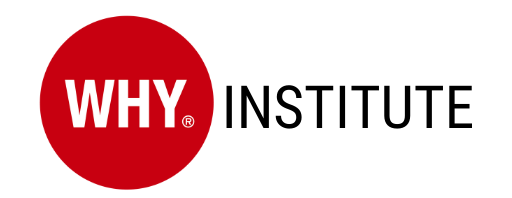
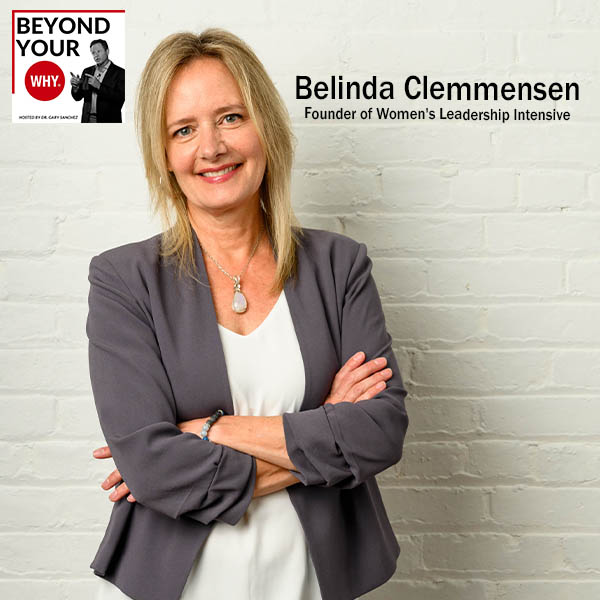
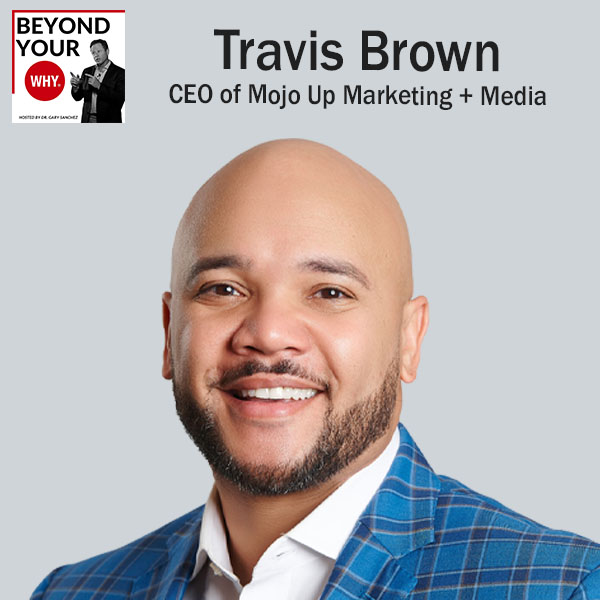
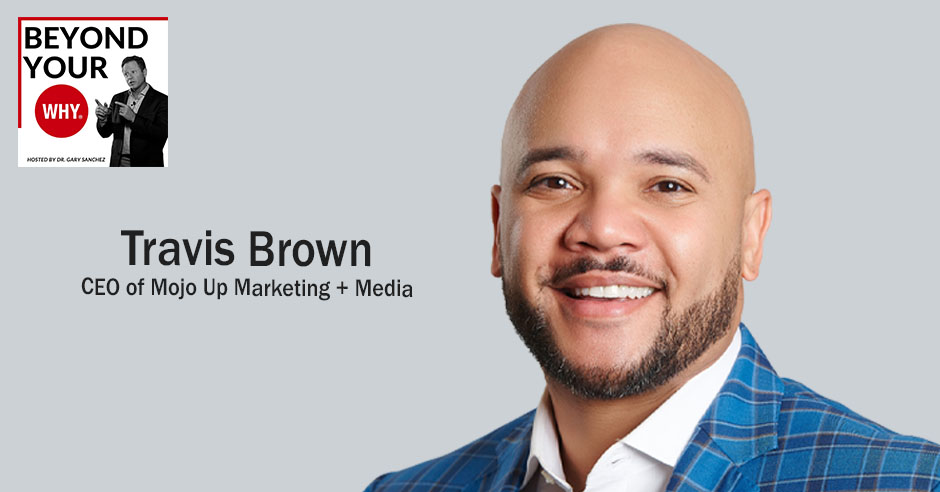





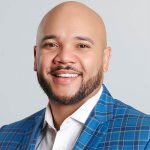 Travis Brown is the CEO of Mojo Up Marketing + Media. Mojo Up is an MBE certified, black-owned and minority-operated, full service, brand marketing agency that is made up of a diverse and talented team of marketing professionals and creatives. Our focus is to tell the story, shape the brand, and guide the marketing future of our clients as the make their greatest impact by using their greatest asset – their own authenticity.
Travis Brown is the CEO of Mojo Up Marketing + Media. Mojo Up is an MBE certified, black-owned and minority-operated, full service, brand marketing agency that is made up of a diverse and talented team of marketing professionals and creatives. Our focus is to tell the story, shape the brand, and guide the marketing future of our clients as the make their greatest impact by using their greatest asset – their own authenticity.